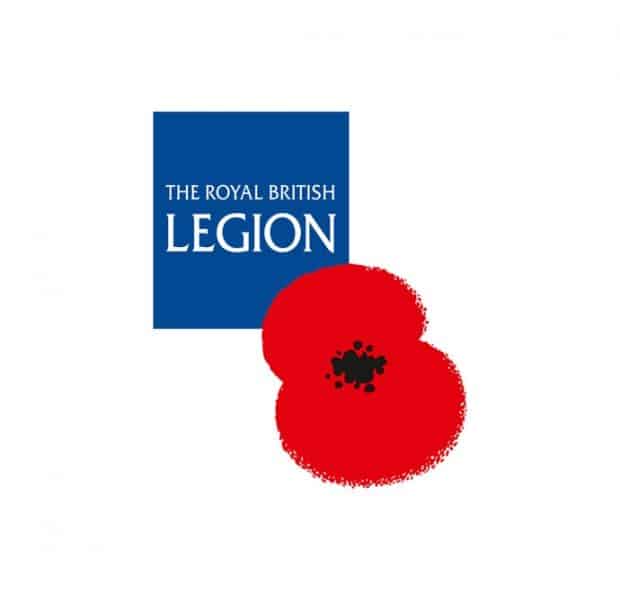1. The poppy is a symbol of Remembrance and hope for a peaceful future
Wearing one is a show of support for the service and sacrifice of our Armed Forces, veterans and their families.
It represents all those who lost their lives on active service in all conflicts; from the beginning of the First World War right up to the present day.
It also honours the contribution of civilian services and the uniformed services which contribute to national peace and security and acknowledges innocent civilians who have lost their lives in conflict and acts of terrorism.
2. Wearing a poppy is a personal choice
Wearing a poppy is a personal choice reflecting individual and personal memories.
3. There is no ‘correct’ way to wear a poppy
It’s a matter of personal choice whether someone chooses to wear a poppy and how they choose to wear it. The best way to wear a poppy is simply with pride.
4. The poppy is red because that’s the natural colour of the poppy flower
During the First World War previously beautiful countryside was blasted, bombed and fought over, again and again. The landscape swiftly turned to fields of mud: bleak and barren where little or nothing could grow.
But out of this devastation the delicate but resilient bright red Flanders poppies grew and flourished in their thousands.
5. The red poppy directly supports the Armed Forces community
Around the remembrance period a variety of poppies are worn. The red poppy is worn as a show of support for the Armed Forces communities across the UK, Allied Forces and the Commonwealth.
Only donations from the sale of our red poppies go directly towards helping the Armed Forces community.
6. Poppies are sold in every community across the UK
Every year the rumour that poppy selling has been banned in some communities resurfaces.
This is simply not true and each year thousands of volunteers from all walks of life take to the streets, train stations and supermarkets around the country for two weeks during the Poppy Appeal.
In 2018 over 40 million poppies were distributed by 40,000 volunteers raising over £50 million to help support serving and ex-serving members of the Armed Forces community and their families.
7. A poem inspired the use of the poppy as a symbol of Remembrance
Shortly after losing a friend in Ypres in 1915, a Canadian doctor, Lieutenant Colonel John McCrae was inspired by the sight of poppies growing in battle-scarred fields to write his now famous poem ‘In Flanders Fields’.
The poem inspired American War Secretary, Moina Michael, who bought poppies to sell to her friends to raise money for Servicemen in need after the First World War.
This was adopted by The (Royal) British Legion in 1921 who ordered 9 million of these poppies and sold them on 11 November that year in the first ever Poppy Appeal.
The poppy has been adopted as a symbol of Remembranceever since.
8. Poppies weren’t always sold with leaves
Like the natural flower, the original version of the poppy did not feature a leaf.
A leaf was first introduced in the 1960s as it was the practice to make poppy sprays, (an alternative to a poppy wreath), which were made up of 5 silk poppies attached to 7 pieces of green fern.
Leaves slowly became an optional extra and by 1984 demand for them had grown to 12 million a year, although they were still issued separately to the poppy.
In 1995 poppies with leaves included were made available for the first time.
9. Donations for poppies helps families like these…
Money raised during the Poppy Appeal helps us support the Armed Forces community in lots of different ways, such as much needed breaks away from everyday life for serving and ex-serving personnel and their families.
10. And funds services like this…
The Poppy Appeal also helps fund services like the Battle Back Centre – the first port of call for wounded, injured and sick service men and women as they start their Individual Recovery Program.
11. Poppies are recyclable
All of the parts of our poppies can be recycled. After Armistice Day you can recycle your poppy at any Sainsbury’s supermarket.
There are also a variety of enamel poppy pins that you can wear instead of a paper poppy and we have a range of alternatives available from our Poppy Shop at www.poppyshop.org.uk. You can then choose to make a donation to the appeal every year.
We are committed to reducing the impact our poppies have on the environment and are working to remove all single use plastic in the future.
Source: information provided by the Royal British Legion
https://www.britishlegion.org.uk/get-involved/ways-to-give/donate
Help keep news FREE for our readers
Supporting your local community newspaper/online news outlet is crucial now more than ever. If you believe in independent journalism, then consider making a valuable contribution by making a one-time or monthly donation. We operate in rural areas where providing unbiased news can be challenging. Read More About Supporting The West Wales Chronicle























